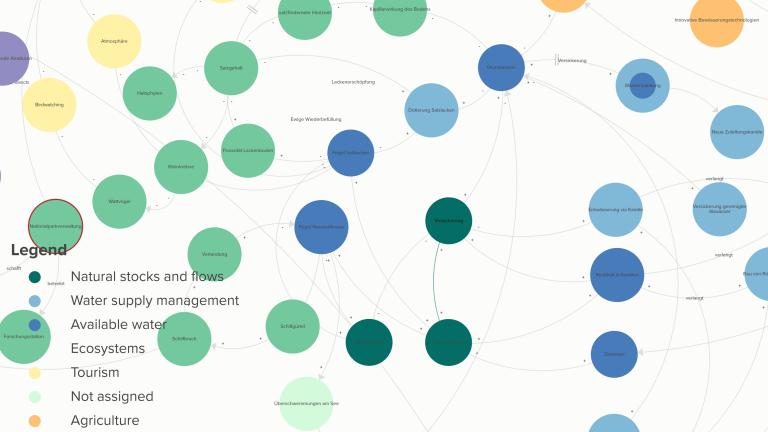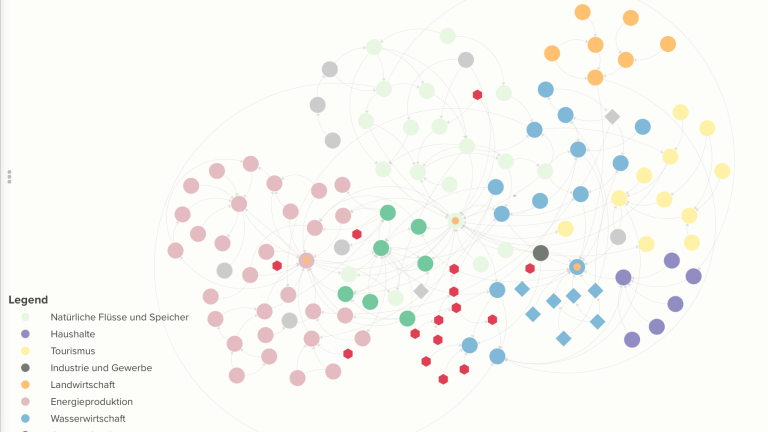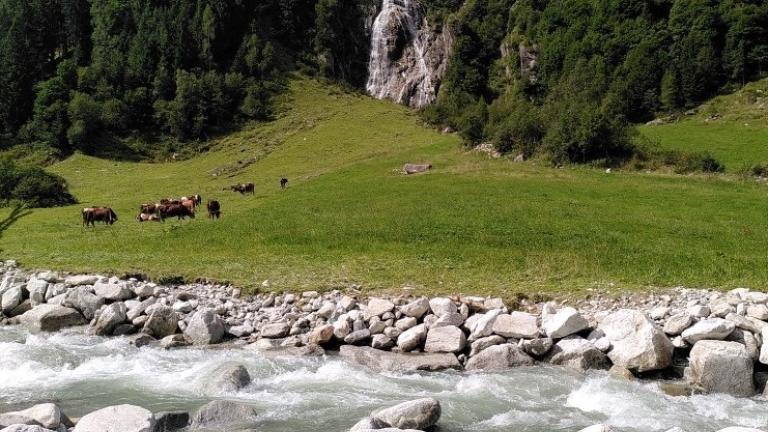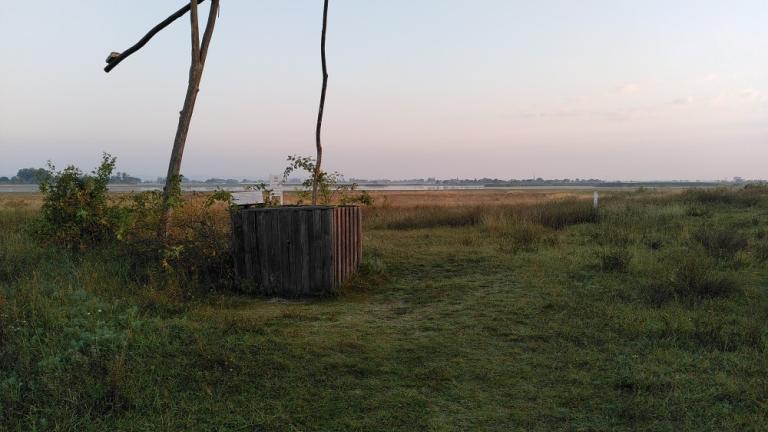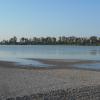
In WaterStressAT we assess water availability and demand in Austrian regions considering alternative socio-economic and climate futures. This is to understand the risk of water stress and associated management opportunities. We are in the process of establishing a stakeholder co-design process spanning the entire project duration involving joint problem-framing, participatory modelling, and co-producing bottom-up water stress scenarios as well as risk management options.
Project background and objectives
Austria is a water-rich country, with only 3% of overall available water being used. The Austrian Panel on Climate Change reports that across the country and on average climate change will not affect water availability significantly. However, locally and regionally, climate change will likely increase pressure on freshwater resources due to decreasing runoff, increasing temperatures – most importantly extreme heat events –, and subsequent increases in water demand. Also, provincial governments acknowledge increasing numbers of drought events and water stress due to competing demands during extremely dry and hot periods. In the light of climate change, water stress, i.e. tension between available water and sectoral demand, such as from agriculture, domestic and industrial uses and ecosystems, is likely to increase in these and potentially in other regions of Austria. It is in these areas and at these scales, i.e. local to regional, where high resolution modeling (both qualitative and quantitative) is lacking and consequently risks of water stress and management opportunities are insufficiently understood
 © WaterStressAT
© WaterStressAT
Policymakers and stakeholders need information on future development of water availability, water demand, and potential conflicts to act and plan accordingly. Thus, the overall objective of WaterStressAT is to assess water supply and demand in Austrian regions considering alternative socio-economic and climate futures, to better understand the risk of water stress and associated management opportunities.
This can be translated into a set of research questions such as:
- What are current regional and sectoral development strategies and how will they contribute to future water stress?
- Which sectors will be most affected by and contribute most to water stress?
- Which management strategies are available to cope with water stress?
- And finally, what are socially and environmentally accepted management strategies with respect to water stress?
Project set-up
To fulfill this objective and answer these questions we need to overcome the challenges associated with complex problems: (1) The nexus character of water stress spanning natural and human systems and (2) the so-called wicked character of many environmental decision problems, associated with high stakes, extensive uncertainties, and conflicting values.
We thus apply a multi-pronged approach combining qualitative and quantitative methods of systems analysis and allowing for stakeholders to co-design both problems and solutions. To achieve high-resolution qualitative and quantitative modeling we limit the scope and choose two regional case studies, representing different environmental and socio-economic settings and indicators for ongoing and future water stress.
We operationalize this project as four work packages and a continuous integration process and extensive synthesis among the same as depicted in Figure 1.
(WP1) Work package 1 entails a stakeholder process spanning the entire project and ensuring a transdisciplinary process. Thus, stakeholders will participate at each stage of our qualitative and quantitative modeling efforts in the subsequent work packages: (1) fact-finding and problem framing, (2a) qualitative modeling defining system boundaries and system elements, (2b) semi-quantitative modeling creating scenarios, (3) reflecting system boundaries, as well as hydrological and climatic futures; and (4) designing and appraising management strategies.
(WP2) We support the engagement process with systematic qualitative analysis of the social and economic systems in each case study region. For this purpose, we use a soft systems approach to integrate various qualitative source data such as strategy and policy documents, key informant interviews, stakeholder events, and academic literature, to create a comprehensive map highlighting important interactions and feedback in the region related to water use. These will be the basis for a set of scenarios informing the hydro-economic model in WP4.
(WP3) We create a solid and unique quantitative basis for the integrated assessment framework (WP4) in terms of hydrological and climate futures through the use of state-of-the-art climatic scenarios and high-resolution spatially distributed hydrological modeling.
(WP4) Work package 4 integrates knowledge from WPs 1 and 2 from a quantitative perspective. We adapt an integrated modeling framework, to the Austrian regional specifications, and use this to calculate water supply and demand under alternative climate scenarios and shared socio-economic development scenarios. This framework allows us to analyze a set of management strategies, such as efficient irrigation systems, groundwater recharge, and intra-regional connection of supply networks.
The synthesized project results will be immediately relevant for cross-sectoral policy making locally, regionally, and nationally. Academically, it will further insight on integrating hard and soft modeling approaches, and applying a transdisciplinary research design.
Project results
We produced Qualitative System Maps (QSM) for each case study region. These maps integrate knowledge from several sources such as existing academic and public sector projects, interviews, and core team meetings. They serve as a reference for further analysis, and contextualization of the hydrological and socio-economic modelling efforts.
Policy Briefs
Policy Brief Pinzgau
This policy brief outlines the main insights from the WaterStressAt project, which made qualitative and quantative efforts to understand what water stress means for a water-rich Alpine region such as Pinzgau in Austria. We introduce a tool that models run-off under several climate change scenarios, as well as a qualitative system map that provides context for how this quantitative knowledge can inform decision making processes particularly in the energy and water supply sectors.
Options Brief Seewinkel
This briefing document is based on the findings of the ACRP project WaterStressAT and provides an overview of current and possible measures to adapt agriculture to climate change in and around the Seewinkel region. Particular emphasis is placed on those measures that create resilience across sectors and in the long term, and not just manage risks at specific points.
Technical brief Seewinkel
This policy brief presents the most important findings from the hydrological modeling (groundwater recharge and withdrawals for agricultural irrigation) in the WaterStressAT project. Moreover, we compare the local analysis in this project to that of the Austrian study Wasserschatz Österreichs.
Policy brief on the CAP AT
A qualitative analysis systematically shows whether and how the Common Agricultural Policy (CAP) can influence water consumption in agriculture. Based on this, solutions were formulated to reduce irrigation from different stakeholders such as processing companies, retailers and consumers.
Project details
Project duration: 1 October 2020 – 30 November 2022 (extended 30 October 2023)
Funding Agency: Österreichischer Klima- und Energiefonds (Austrian Climate and Energy Fund)
Funding Program: Austrian Climate Research Program (ACRP), ACRP – 12th Call, 2019, KR19AC0K17504,
Thematic Area: Specific support for Austria’s policymakers
Partners:
- International Institute for Applied Systems Analysis (IIASA)
- Environment Agency Austria
- Central Institute for Meteorology and Geodynamics
- University of Graz
Publications
Guillaumot, L. , Smilovic, M. , Burek, P. , de Bruijn, J. , Greve, P., Kahil, T. , & Wada, Y. (2022). Coupling a large-scale hydrological model (CWatM v1.1) with a high-resolution groundwater flow model (MODFLOW 6) to assess the impact of irrigation at regional scale. Geoscientific Model Development 15 (18) 7099-7120. 10.5194/gmd-15-7099-2022.
Hanger-Kopp, S. (2021). Drivers of farmers’ adaptive behavior in managing drought risks: A literature review focusing on North-America, Europe, and Australia. IIASA Working Paper. Laxenburg, Austria: WP-21-004
Hanger-Kopp, S. & Palka, M. (2021). Decision spaces in agricultural risk management: a mental model study of Austrian crop farmers. Environment, Development and Sustainability 10.1007/s10668-021-01693-6.
Hanger-Kopp, S., Thaler, T., Seebauer, S., Schinko, T. , & Clar, C. (2022). Defining and operationalizing path dependency for the development and monitoring of adaptation pathways. Global Environmental Change 72 e102425. 10.1016/j.gloenvcha.2021.102425.
Valencia, R., Guillaumot, L. , Sahu, R.K. , Nam, C., Lierhammer, L., & Máñez Costa, M. (2023). An assessment of water management measures for climate change adaptation of agriculture in Seewinkel. Science of the Total Environment 885 e163906. 10.1016/j.scitotenv.2023.163906.
News

04 August 2023
WaterStress: A systems perspective on Seewinkel region and its development opportunities
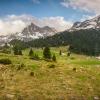
25 April 2023

